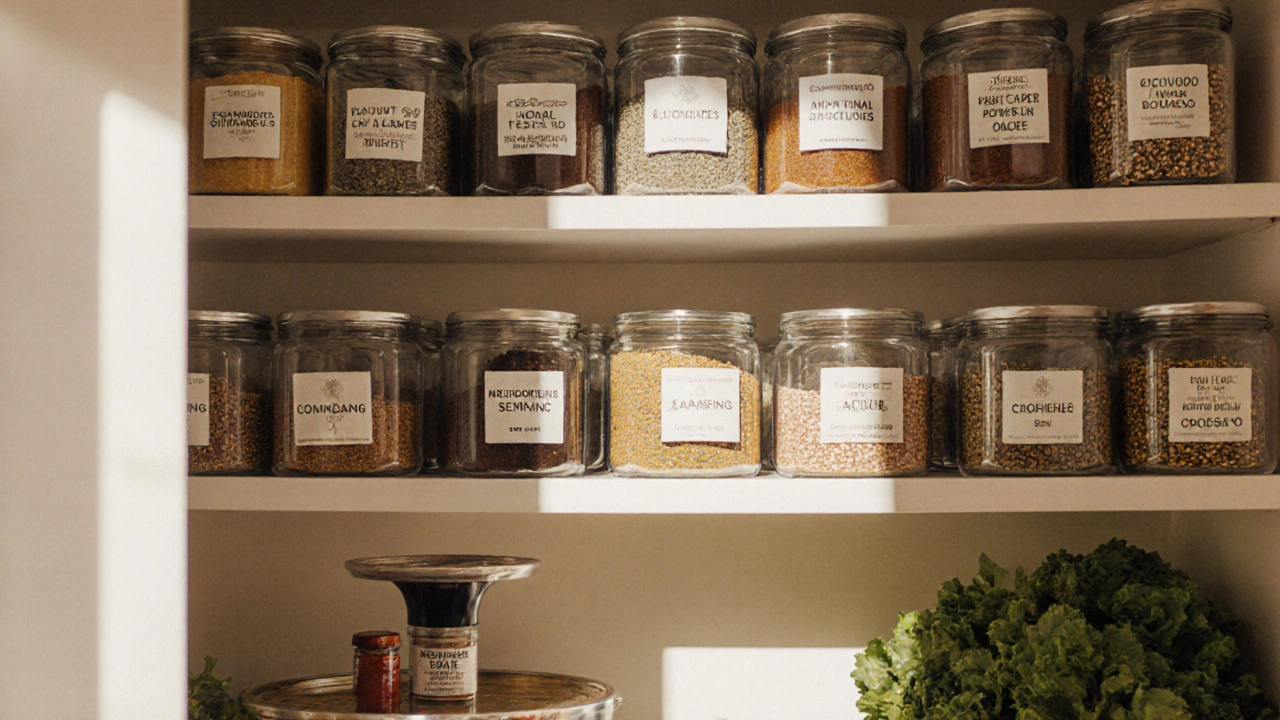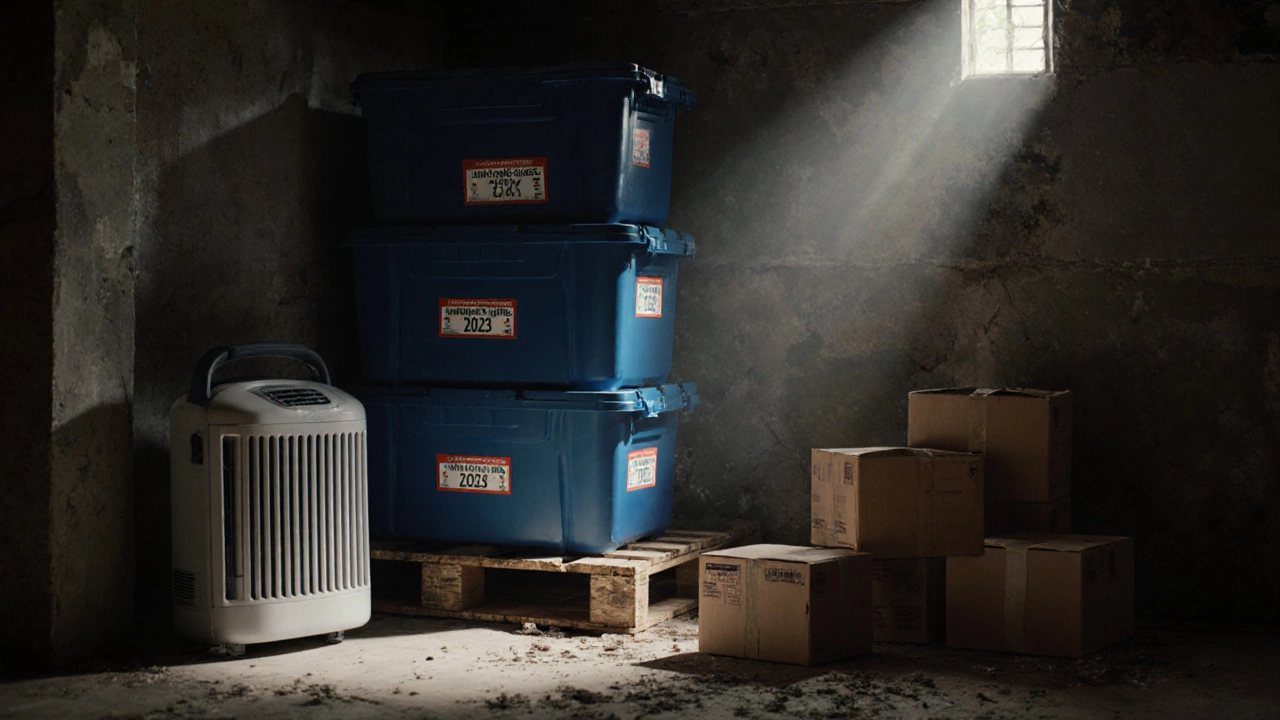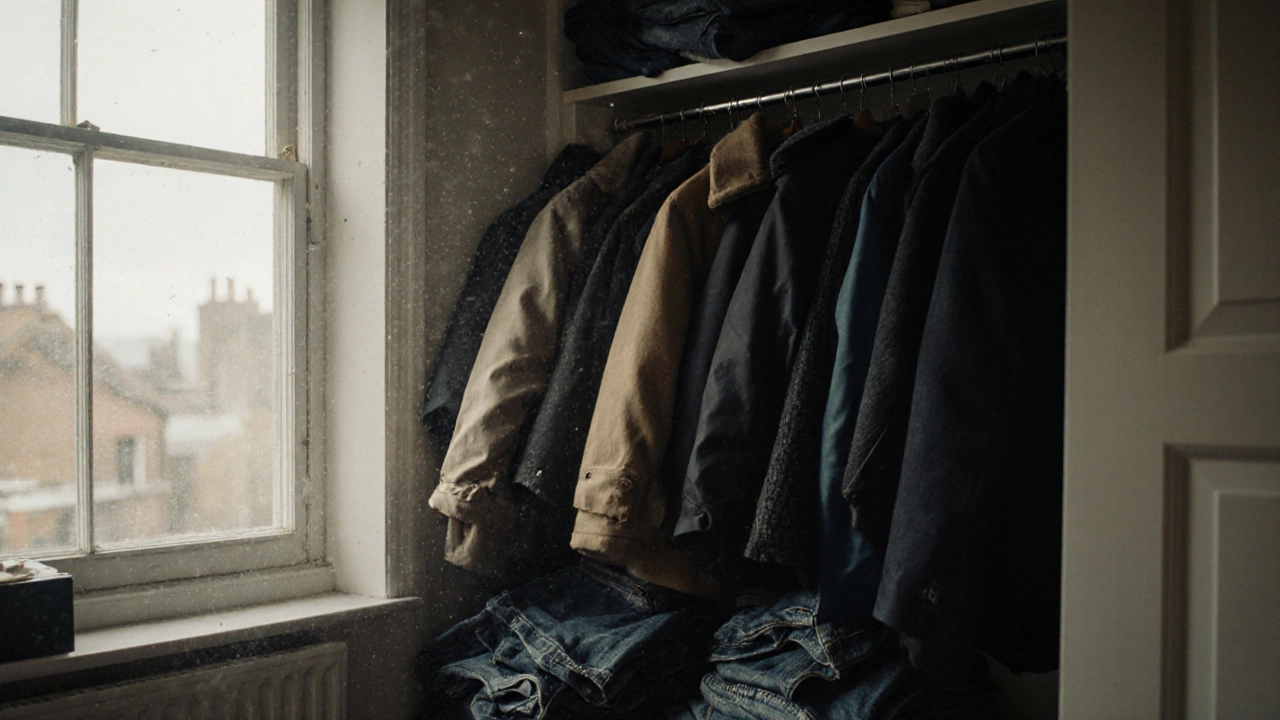Closet Space Calculator
Most people think storage is about buying more bins or shelves. But the real issue isn’t lack of space-it’s poor planning. By the time you’re digging through five stacked boxes in the garage looking for last year’s Christmas lights, you already know something’s broken. Storage problems in the home don’t show up as empty closets. They show up as stress, wasted time, and that sinking feeling every time you open a drawer.
Overcrowded Closets Are the Biggest Culprit
Your closet isn’t too small. It’s just full of things you don’t use. A 2023 study by the UK Household Inventory Project found that the average British household keeps 14% of clothing items unworn for over two years. That’s not hoarding-it’s inertia. You bought it on sale, it fit once, or you thought you’d wear it ‘someday.’ Now it’s blocking access to the three pairs of jeans you actually wear.
Shoe racks that don’t fit, hanging space taken up by bulky coats you only wear in January, and drawers stuffed with socks you can’t even see-these aren’t storage failures. They’re design failures. You didn’t plan for how things actually get used. A deep closet needs vertical dividers. Shelves should be no deeper than 14 inches for easy reach. If you can’t see or grab something without pulling out three other things, it’s not storage-it’s a puzzle.
Pantry Chaos Is a Silent Time Drain
Open your pantry. Do you see labeled jars, neatly stacked cans, and clear visibility? Or do you see a pile of expired soup, a rogue bag of rice, and a mystery box that’s been there since 2022?
Food storage isn’t just about keeping things fresh-it’s about knowing what you have. The average UK family throws away £60 a month on food they forgot they bought. That’s not waste. That’s poor system design. Clear containers with labels aren’t a Pinterest trend. They’re a necessity. Use the FIFO method: First In, First Out. Put new items behind old ones. If you can’t read the label without pulling everything out, you’re just guessing what’s inside.
Shelves should be shallow. Deep shelves create dead zones. Turntables help, but only if they’re the right size. A 12-inch diameter turntable for spices works. A 20-inch one for canned goods? You’ll knock over three jars just to get to the beans.
Basements and Attics Are Storage Black Holes
Basements and attics are where stuff goes to disappear. They’re not storage spaces-they’re memory holes. You put boxes there thinking, ‘I’ll sort it later.’ Later never comes. And when it does, you’re facing damp, dust, and mice.
Moisture is the silent killer. In Bristol’s damp climate, cardboard boxes turn to mush in six months. Plastic bins with tight seals are the only answer. But even then, if you don’t label them properly, you’re just moving the problem. Write what’s inside, and write the date. ‘Christmas decorations 2023’ isn’t enough. ‘Christmas lights (red), tree skirt, ornaments (glass, fragile), 11/2023’ is.
And don’t forget temperature. Electronics, vinyl records, and old photo albums don’t survive in an attic that hits 35°C in summer. If you’re storing anything valuable or sentimental, it needs climate control. A garage with a dehumidifier is better than a dry attic.

Under-Bed and Corner Spaces Are Wasted Real Estate
You’ve got six inches of empty space under every bed in your house. That’s not ‘too tight to use.’ That’s free storage. But only if you use the right tools. Flat, low-profile bins with wheels are the answer. Sliding drawers that pull out like a filing cabinet work better than bulky boxes you have to lift.
Corner shelves? They’re useless unless they’re designed for the corner. A standard shelf leaves 40% of the space empty. A corner unit with a lazy Susan or angled shelves makes that space usable. Same goes for under-stairs spaces. Turn that dead zone into a pull-out cabinet for shoes, tools, or linens.
Don’t just store things there-design for access. If you have to move a chair, crawl on the floor, and pull out three other boxes just to get to one pair of winter boots, you won’t do it. And if you don’t do it, the space stays empty.
Too Many ‘Just in Case’ Items
‘I might need this someday’ is the most dangerous phrase in home storage. That extra blender. The half-used paint can. The suitcase from your 2018 trip to Spain. The 12 spare phone chargers. The broken toaster you ‘might fix.’
These aren’t ‘just in case’ items. They’re emotional anchors. You’re holding onto them because letting go feels like admitting you made a mistake. But every ‘just in case’ item steals space from something you use every day.
Use the 12-month rule: If you haven’t used it in the last year, and you don’t have a specific plan to use it in the next, let it go. Donate it. Sell it. Recycle it. If you’re holding onto something because it was expensive, remember: you’ve already paid for it. Now you’re paying in space, time, and mental energy.

Storage That Doesn’t Match Your Life
Storage solutions fail when they’re bought for a magazine photo, not for your real life. You bought those glass-front cabinets because they looked nice. But if you never open them because you can’t find things inside, they’re just expensive decoration.
Ask yourself: Do you need visibility? Or do you need access? If you use your mugs every morning, keep them on open shelves. If you only use your fancy china for Christmas, store it in a cabinet with labeled bins. Don’t force your habits to fit the storage. Fit the storage to your habits.
Parents with young kids need low, easy-access bins. Seniors need pull-down shelves. People who cook daily need utensils within arm’s reach. Storage isn’t one-size-fits-all. It’s one-size-fits-you.
Fixing Storage Isn’t About Buying More
The fix isn’t a new shelving unit. It’s a mindset shift. Start by emptying one space-just one. A drawer. A closet corner. A pantry shelf. Take everything out. Wipe it down. Sort it. Ask: Do I use this? Do I love this? Do I need this? If the answer is no to all three, let it go.
Then, design for access. Everything you use weekly should be at eye level. Monthly items go higher or lower. Seasonal? Put them in labeled, sealed bins with dates. And never, ever put something back without a home. If you don’t have a place for it, don’t bring it in.
Storage isn’t about having more space. It’s about using what you have wisely. The goal isn’t a perfectly organized Instagram photo. It’s waking up without dreading the mess. It’s finding your keys in under 10 seconds. It’s knowing what you have so you don’t buy duplicates. That’s real storage success.
Why does my closet feel full even though I don’t have many clothes?
It’s not the number of clothes-it’s how they’re arranged. Bulky items like coats, sweaters, and bags take up too much hanging space. Use slim, non-slip hangers to save 30% of space. Fold bulky knits instead of hanging them. Use shelf dividers to keep stacks tidy. If you can’t see the top item in a pile, you’re wasting space.
Is it better to use clear bins or labeled boxes for storage?
Clear bins are better if you need to see contents quickly-like seasonal clothes or toys. But if you’re storing items you rarely access, like holiday decorations, labeled opaque bins work fine. The key isn’t transparency-it’s labeling. Always write what’s inside and the date. ‘Winter gear’ is useless. ‘Winter coats, gloves, scarves, 2024’ tells you everything at a glance.
How do I stop buying more storage containers?
Stop shopping until you’ve sorted what you already have. Most people buy bins because they’re overwhelmed. But the problem isn’t containers-it’s clutter. Empty one space completely. Sort everything into keep, donate, toss. Only then, measure the space and buy ONE bin that fits perfectly. You’ll likely find you already have enough containers at home.
Can I store items in the garage safely?
Yes, but only if you protect them. Cardboard absorbs moisture and attracts pests. Use heavy-duty plastic bins with tight lids. Elevate them off the floor with wooden pallets or plastic risers. Keep electronics, books, and photos out of the garage entirely. If your garage gets hotter than 30°C or colder than 0°C in winter, it’s not safe for sensitive items.
What’s the fastest way to fix a messy pantry?
Take everything out. Throw away expired food. Wipe shelves. Group items by type: baking, canned goods, snacks, breakfast. Use clear, uniform containers for open packages. Put frequently used items at eye level. Put heavy items on lower shelves. Label everything. Do this in one afternoon-it takes less time than you think, and you’ll never go back to the chaos.

